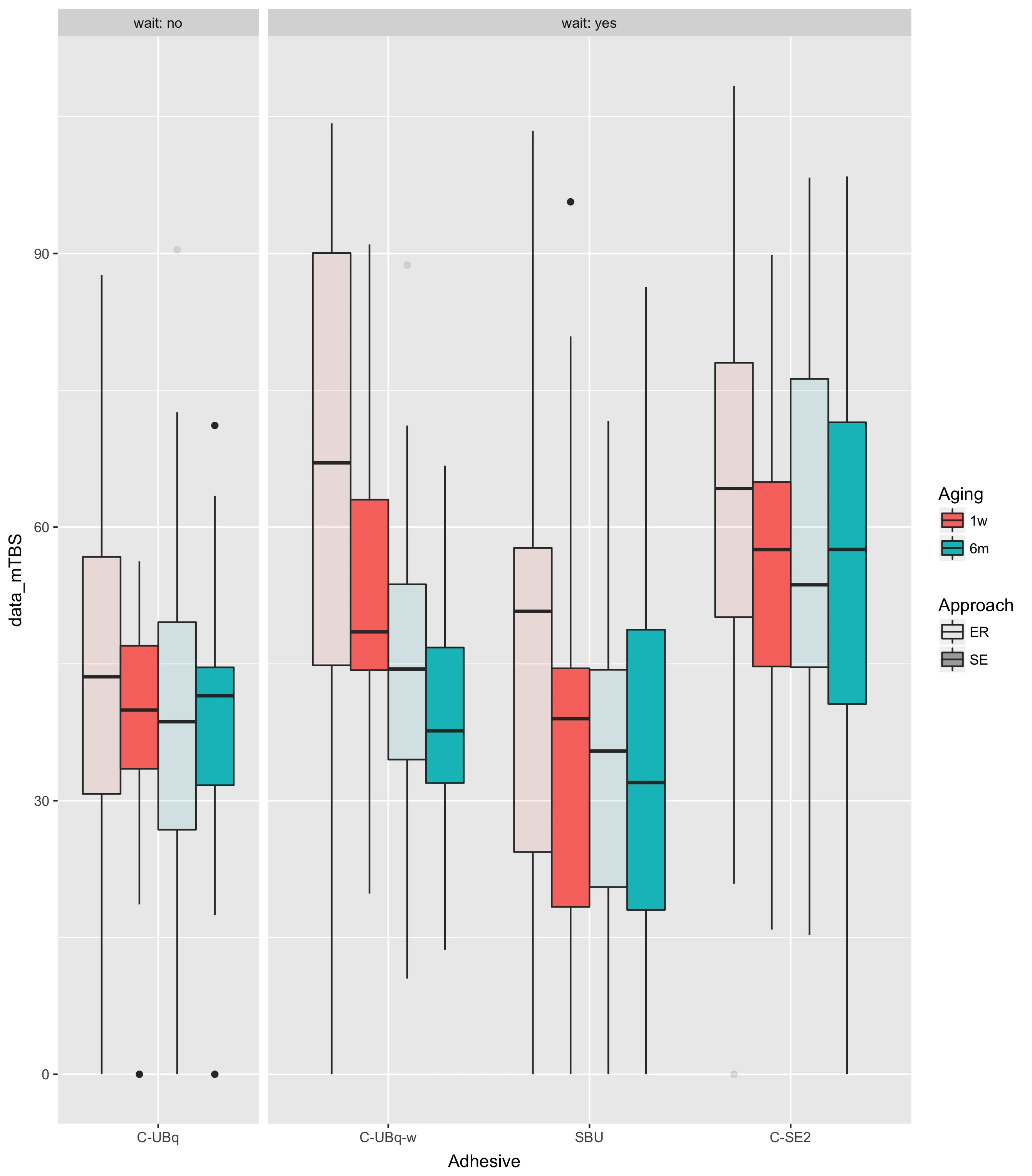dput用于数据传输,从https://pastebin.com/1f7VuBkx复制(太大无法在此处包含)
data.frame': 972 obs. of 7 variables:
$ data_mTBS : num 20.3 22.7 0 47.8 58.7 ...
$ data_tooth: num 1 1 1 1 1 1 1 1 1 1 ...
$ Adhesive : Factor w/ 4 levels "C-SE2","C-UBq",..: 2 2 2 2 2 2 2 2 2 2 ...
$ Approach : Factor w/ 2 levels "ER","SE": 1 1 1 1 1 1 1 1 1 1 ...
$ Aging : Factor w/ 2 levels "1w","6m": 1 1 1 1 1 1 2 2 2 2 ...
$ data_name : Factor w/ 40 levels "C-SE2-1","C-SE2-10",..: 11 11 11 11 11 11 11 11 11 11 ...
$ wait : Factor w/ 2 levels "no","yes": 1 1 1 1 1 1 1 1 1 1 ...
head(Data)
data_mTBS data_tooth Adhesive Approach Aging data_name wait
1 20.27 1 C-UBq ER 1w C-UBq-1 no
2 22.73 1 C-UBq ER 1w C-UBq-1 no
3 0.00 1 C-UBq ER 1w C-UBq-1 no
4 47.79 1 C-UBq ER 1w C-UBq-1 no
5 58.73 1 C-UBq ER 1w C-UBq-1 no
6 57.02 1 C-UBq ER 1w C-UBq-1 no
当我运行以下代码时,没有包含“wait”,它可以完美地工作,但是当我尝试在模型中包含“wait”时,它会出现奇异性问题。
LME_01<-lme(data_mTBS ~ Adhesive*Approach*Aging*wait, na.action=na.exclude,data = Data, random = ~ 1|data_name);
MEEM(object, conLin, control$niterEM)中的错误: 在0级、第1个块的backsolve中发生奇异性
contrast_Aging<-contrast(LME_01,a = list(Aging =c("1w"),Adhesive = levels(Data$Adhesive),Approach = levels(Data$Approach) ),b = list(Aging =c("6m"), Adhesive = levels(Data$Adhesive),Approach = levels(Data$Approach)))
c1<-as.matrix(contrast$X)
Contrastsi2<-summary(glht(LME_01, c1))
&
contrast_Approach<-contrast(LME_01,
a = list(Approach = c("SE"), Aging =levels(Data$Aging) ,Adhesive = levels(Data$Adhesive)),
b = list(Approach = c("ER"), Aging =levels(Data$Aging) ,Adhesive = levels(Data$Adhesive)))
c2<-as.matrix(contrast$X)
Contrastsi3<-summary(glht(LME_01, c2))
谢谢您的先行支持。
